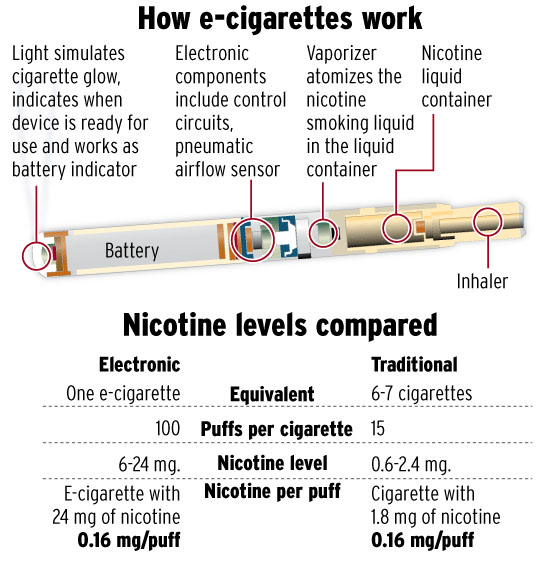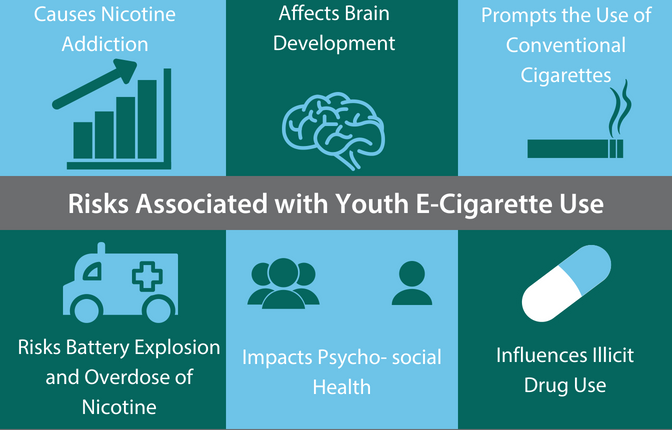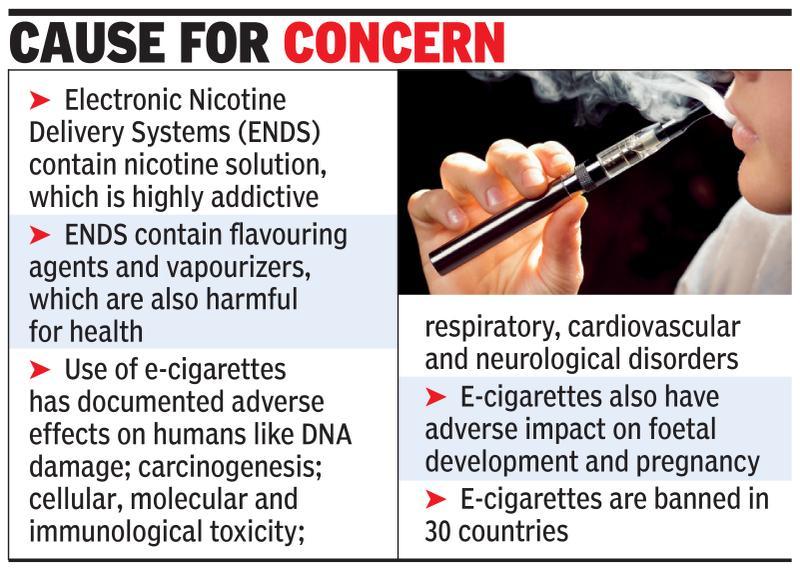PREVIOUS
India’s Ban on e-Cigarettes
September 26 , 2019
2303 days
6621
0
The story so far:
- The Union Cabinet approved the promulgation of the Prohibition of Electronic Cigarettes (production, manufacture, import, export, transport, sale, distribution, storage and advertisement) Ordinance, 2019 with immediate effect.
- As a result, anyone violating it will be imprisoned for up to one year or fined up to ₹1,00,000 or both for the first offense.
- Storage of electronic-cigarettes shall also be punishable.
- Besides health concerns, the government is concerned that e-cigarettes can “seriously undermine and derail the government’s efforts to reduce the prevalence of tobacco use”.
- The ordinance will need to be approved by Parliament when it meets in November.
- Prior to this announcement, 15 states and one Union territory had already banned e-cigarettes.
- These include Punjab, Karnataka, Mizoram, Kerala, Jammu & Kashmir, Uttar Pradesh, Bihar, Maharashtra, Tamil Nadu, Jharkhand, Himachal Pradesh, Puducherry, Rajasthan, Meghalaya, Odisha, and Nagaland.

Working method of e-cigarettes
- Electronic Nicotine Delivery Systems (ENDS) or non-combustible tobacco products are known by many names — vapes, e-hookahs, electronic cigarettes, and e-pipes.
- E-cigarettes may be manufactured to look like traditional cigarettes and are marketed as tobacco-free nicotine delivery devices.
- Instead of burning tobacco leaves like in traditional cigarettes, an e-cigarette, which is a battery-operated device, produces an aerosol by heating a solution containing nicotine among other things.

- The device contains nicotine and flavors in the form of liquid which is primarily composed of solvents such as glycerol and/or propylene glycol.
- The aerosol containing a suspension of fine particles and gases simulates cigarette smoke.
- Following a puff, the aerosol is delivered to the user’s mouth and lungs and the rest is exhaled.
Effects of e-cigarettes
- Unlike smoking, the adverse health effects of e-cigarettes are not yet known.
- But like traditional cigarettes, e-cigarettes too deliver ultrafine particles and nicotine deep into the lungs, which is then absorbed by the blood.

- A 2018 study found the use of e-cigarette daily was associated with a 79% increase in heart attack risk after other variables were taken into account.
E-cigarettes and quitting smoking
- According to a white paper on e-cigarettes by the Indian Council of Medical Research (ICMR), depending on the battery output voltage used, nicotine solvents can release in varying amounts potential carcinogens such as acetaldehyde, formaldehyde, and acetone.
- The liquid-vaporizing solutions also contain “toxic chemicals and metals that can cause several adverse health effects including cancers and diseases of the heart, lungs, and brain”.
- Flavors such as diacetyl used in e-cigarettes are linked to serious lung disease.
- E-cigarettes also contain volatile organic compounds, heavy metals, such as nickel, tin, and lead.
- In 2016, the U.S. Surgeon General had concluded that “e-cigarette use among youths and young adults is a public health concern; exposure to nicotine during adolescence can cause addiction and can harm the developing adolescent brain.”
- Nicotine “harms parts of the brain that control attention, learning, mood, and impulse control.”
- Nicotine also changes the way synapses — connections between brain cells — are formed. This is of concern as more synapses are formed in younger brains.
- In animals, aerosol exposure was found to increase “secretion of inflammatory markers, induced airway hyper-reactivity and caused lung tissue degradation in chronic exposure.”
- But in 2018, Public Health England, England’s public health agency, reiterated its claim that vaping is at least 95% safer than smoking.
Do they help smokers to kick the habit?
- The manufacturers have promoted e-cigarettes as a harm-reducing product.
- But at present, compared with nicotine patches and nicotine gum, there is limited evidence to support the claim that e-cigarettes help people to stop smoking.
- The amount of nicotine in each vial varies; so, does the amount of nicotine consumed in each puff.
- Nicotine content mentioned in the label and the actual amount has also been found to differ.
- The U.S. Food and Drug Administration (FDA) has not approved e-cigarettes as an alternative to reduce smoking.
- One study found that though e-cigarettes led to a higher percentage of people quitting smoking, nearly 80% of quitters were still vaping.
- Dr. Ned Sharpless, the Acting Commissioner of the FDA, says “Given that most e-cigarette users continue to smoke cigarettes, the answer is not clear [that e-cigarettes aid quitting].”
- A 2015 survey cited by The Truth Initiative (an anti-tobacco organization) found that almost 60% of those who used e-cigarettes also smoked cigarettes, called as dual users.
- A meta-analysis of 25 studies found that smokers, who used e-cigarettes as a cessation aid, were 27% less likely to quit smoking.
Addiction of e-cigarettes
- According to a National Youth Tobacco Survey, 2018 carried out by the Centers for Disease Control and Prevention (CDC), over 3.6 million kids in the U.S. are using e-cigarettes.

- High school students in the U.S. who used e-cigarettes at least once in 30 days increased from 11.7% in 2017 to 20.8% in 2018; the increase was 48% for middle school children.
- Flavors in e-cigarettes have been cited as one of the top three reasons for children to use them.
- The misconception that “e-cigarettes are less harmful than other forms of tobacco such as cigarettes” is another main reason.
- Youth who use e-cigarettes may be more likely to go on to smoke conventional cigarettes.
óóóóóóóóóó
Leave a Reply
Your Comment is awaiting moderation.


